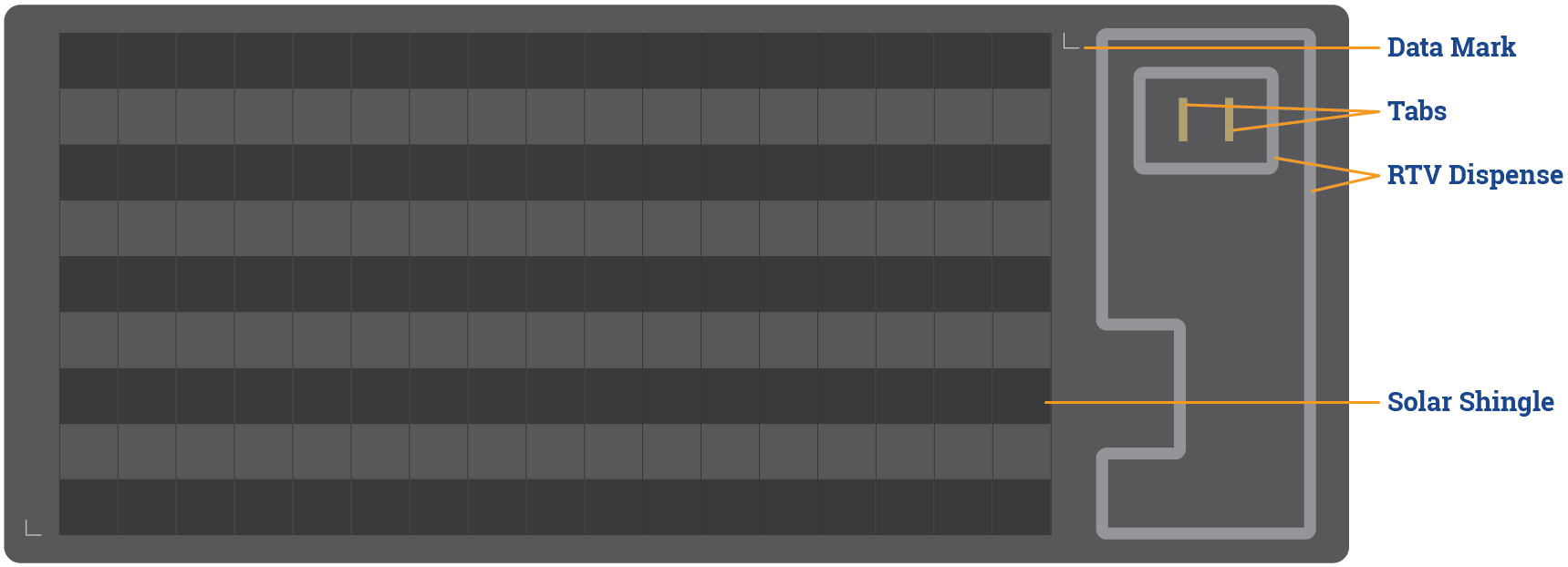Case Summary
Direct access to solar energy at your home has several benefits including lower utility bills, increased market value, and self-sustainability. However, typical solar panels can be bulky and out-of-place on a residential house. As the demand for residential solar power increases, manufacturers globally are working to improve the appearance and functionality of solar panels. GP Reeves worked with a manufacturer who designs solar panels to mimic the look of standard roofing shingles. These panels can collect energy from any light source, although direct sunlight is ideal.
As our customer’s production expanded, their current material application process was causing a bottleneck in production. To improve this, we developed an automated RTV (room temperature vulcanizing) material dispensing system that integrated into their pre-existing assembly line.
The Problem
Their solar shingles are designed to blend in and integrate with the style of the roof they are on. Because of this, the appearance and integrity of the units is a huge concern for the manufacturer. On each solar shingle there are tabs that connect the electrical components of the individual shingles together, mounting brackets to attach them to the roof, and a junction box to protect the tabs and electrical components from the environment.
RTV is used to seal two separate components to the solar shingle: the junction box and the mounting bracket. Their previous process loaded the junction box or bracket into an offline fixture for the material dispense. From there, they would use a jig to manually place the components onto the shingle. This manual step ran the risk of human error, increasing the chance of smeared RTV material on the components. The improper material placement could cause weak seals resulting in water leaks which may cause damage to the panel or even equipment failure.

The Challenge
RTV can be challenging to work with due to its material properties. RTV is a thick material and it has a relatively fast cure time, creating a strong bond when applied. This meant our system would have to work quickly and accurately. Thick materials often require higher pressures for movement. Our equipment had to be capable of handling both the necessary pressure and curing properties of the material.
We were integrating our system into a pre-existing conveyor line. Previously, the customer had used a gantry dispense system, but it was standalone, and did not scale for production. The complexity of this transition meant there was going to be a lot of collaboration (one of our specialties). We needed to work with multiple groups across the world. Manufacturing occurs in the USA, but the company’s headquarters as well as the conveyor manufacturer are both located overseas.
The Solution
The customer’s original intention was to integrate their offline system into the new assembly process, but we offered a method that was not previously considered. Our vision was a new, completely automated system. The system would not only apply the RTV directly to the shingle but catch broken or misaligned tabs that might affect the quality of the unit.
In the improved process, a shingle comes down the conveyer to our dispense automation cell, which is equipped with a vision system. The system locates the data marking on the panel to verify its location, since the panel positioning can vary slightly between cycles. The two tabs on the panel are inspected to ensure that they are in the correct position and alignment for the junction box to attach. If the system sees anything that may cause issues, an error signal is sent.
After confirming positioning of the panel and the tabs, the robot utilizes information captured by the vision system to determine the dispense location. The robot dispenses the material on two areas of the shingle. The first place is in a path around the tabs to seal the junction box, and the second is a path to attach the mounting bracket.
As we noted before, the properties of RTV make it a necessity to have equipment with the capabilities to handle it. AA7 Servo Dispensers are utilized to handle the amount of material being dispensed while keeping the moisture cure material in an airtight barrier. We utilized an ACED Dispense Valve, which is designed to accommodate thicker materials with less restriction and a stronger flow, along with a Teflon-braided stainless-steel hose to accommodate the high working pressure. 8.5 ccs of material are dispensed in the paths for the brackets and junction box. The conveyer is signaled when it’s done, the panel moves on, and our dispense cell waits for the next shingle to repeat the process.

End Result
We had fully automated a labor-intensive process, achieving a cycle time under fifteen seconds and having a massive impact on the efficiency of their assembly. After the original system was implemented in their facility, the team was able to witness the impact to production efficiency and placed an order for 6 more identical systems. With solar energy gaining more and more popularity, we are looking forward to more projects like this in the future!
Need to elevate your production?
Fill out the form below and we’ll follow up with you!
